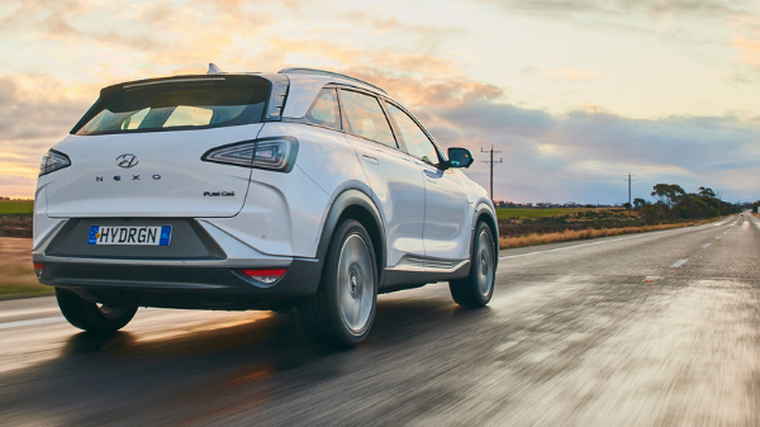Record set in hydrogen car

A team has broken the world record for the longest distance travelled in a hydrogen-powered vehicle on a single tank.
Australian Hyundai rally driver Brendan Reeves drove a production-spec Nexo on the successful attempt.
Starting from Melbourne and after 807km of efficiency-focused driving, he arrived in Broken Hill with plenty of range still showing on the trip computer of the fuel-cell electric vehicle (FCEV).
The journey then continued to Silverton, an outback town on Broken Hill’s outskirts that’s best known as the setting for 1980s post-apocalyptic film Mad Max 2. The Nexo was then driven an extra 60km before its hydrogen tank was depleted.
The total distance was 887.5km. This exceeded the previous world record of 778km set by French aeronaut Bertrand Piccard, also in a Nexo, on his journey across France from Sarreguemines to Le Bourget.
The distance measured by an isolated GPS unit on-board Reeve’s Nexo registered 903.4km, while Google Maps’ distance was 905km. However, for the purposes of the test, the car’s own trip computer was used as the official distance recorder.
Reeves says: “I was constantly checking the car’s efficiency read-out to maximise the distance I was getting per kilogram of hydrogen.
“By using techniques from rallying, such as looking as far down the road as possible, as well as tips I’ve learned from my father for driving a truck efficiently over long distances, it’s possible to go way beyond Nexo’s official range.”
The trip took 13 hours and six minutes at an average speed of 66.9kph. The low-fuel warning first lit up at 686km with more than 200km of range left from that point. The light started flashing after 796km with 90km of real range remaining.
During the trip the Nexo consumed a total of 6.27kg of hydrogen at a rate of 0.706kg/100km.
It purified 449,100 litres of air on the journey – enough for 33 adults to breathe in a day – with its plastic exhaust emitting only water in vapour and droplet form throughout the trip.
Also, it emitted zero carbon dioxide (CO2) emissions. A standard internal combustion engine vehicle would have emitted about 126kg of CO2 over the same distance.
.png)





